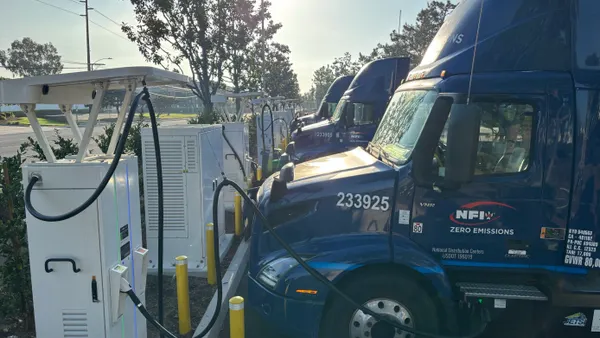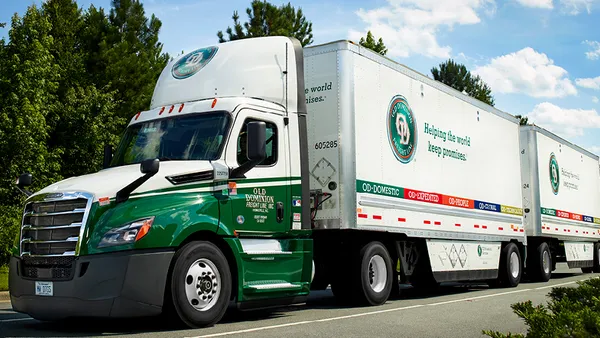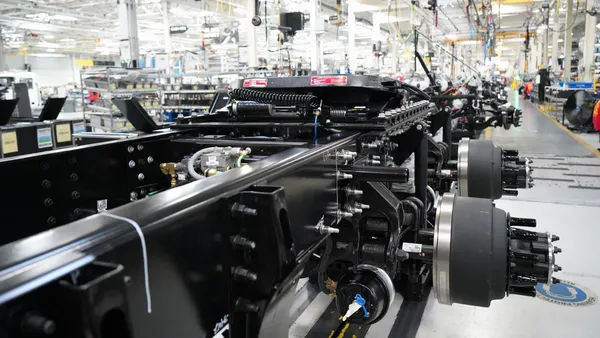This article is part of a series about how six big fleets are planning for a hot freight market in 2022. Click here to view the entire package.
Forward Air's footprint of about 100 terminals will grow to about 130 terminals over the next three to four years, as the carrier doubles down on its premium LTL business, CEO Thomas Schmitt said at the Stephens Annual Investment Conference in Nashville in December.
"Our main show is LTL," Schmitt said.
Forward Air anticipates a strong freight economy in 2022, but noted premium LTL will remain strong even if the cycle begins to turn. The explosion in e-commerce, accelerated in many ways by the pandemic, has created a supply chain environment centered around smaller quantities of freight shipped more frequently — often via LTL.
Seeking premium LTL freight
Forward Air operates in high-value freight industries, such as medical equipment, technology and industrial parts, boasting customers including United Cargo, Expeditors and Best Buy. Schmitt valued the premium LTL market around $10 billion and estimated Forward Air has less than 10% market share.
In the summer of 2021, the carrier worked to cull "inefficient" freight, such as non-palletized or oversized shipments, out of its network, Schmitt said on an October earnings call. By September, "the whole thing came beautifully together," he said. Inefficient freight was gone, and dense, high-value freight became a larger part of the business. Revenue per shipment rose 50% YoY.
Had the company not cleansed its freight mix, "we would have run out of space in some of our core terminals," Schmitt said. "And this would have ... screwed up the exact customer base with the exact high value freight that we actually want to move."
Forward Air will expand its terminal network in primary as well as secondary markets, based on nationwide freight data and customer feedback.
A growing terminal footprint
Over the last year, Forward Air branched out into a number of secondary markets, because "freight flows and our customers told us to go there," Schmitt said. He named Wichita, Kansas, and Chattanooga, Tennessee, as examples of secondary markets, compared to primary markets such as Atlanta, Chicago and Dallas.
But that doesn't mean Forward Air will neglect terminal expansion in primary markets. In fact, Schmitt said the company will add secondary terminals in primary markets.
"We are going to hit close to the ceiling in primary markets," Schmitt said.
Nearly half of Forward Air's revenue comes from LTL
Several LTL carriers have worked to expand their terminal networks, to better serve shippers' needs.
Saia plans to open between 10 and 15 terminals this year, in locations that are close to its customers to reduce stem miles. XPO Logistics recently debuted a 150,000-square foot LTL service center in the Chicago area, which CIO and acting LTL President Mario Harik dubbed a "massively important part of the plan to expand our capacity."
There's a limit, though. One of the challenges with UPS Freight, as it was handed off to TFI, is too many terminals, according to CEO Alain Bedard.
Adding terminals is just one part of Forward Air's growth strategy. Schmitt hinted that further acquisitions could be on the way, after it acquired the assets of J&P Hall Express to help expand its LTL network.
"That was an appetizer," Schmitt said at the Stephens conference. "There probably will be a main course at some point."












